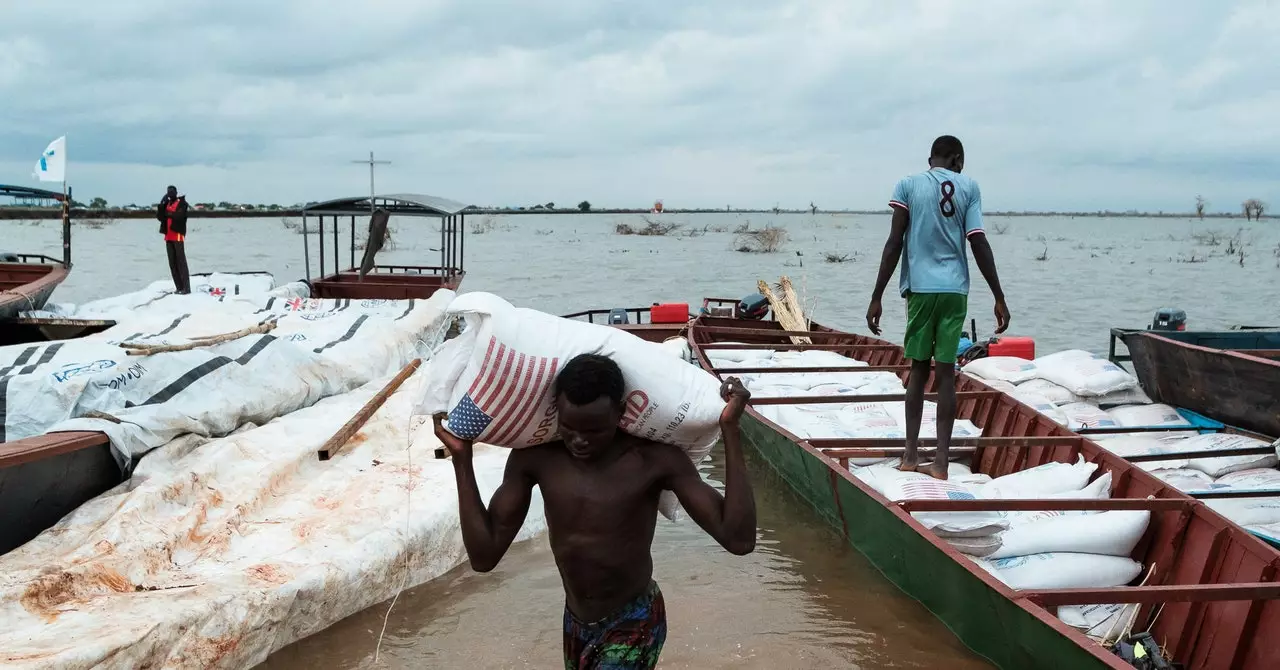Fews Net, or the Famine Early Warning Systems Network, serves as a cornerstone in the landscape of global humanitarian aid, particularly concerning food security. Payal Chandiramani, a spokesperson for Chemonics, highlighted USAID’s intent to exempt Fews Net from budget cuts, indicating the agency’s recognition of its significance. Despite the lack of commentary from USAID and the State Department, the agency’s collaboration with Fews Net exemplifies a critical alliance that contributes to macro-level understanding of food security dynamics. Historically, Fews Net has set itself apart by incorporating an extensive array of variables in its analytical frameworks, showcasing how nuanced factors can dictate food stability.
Diving deeper into its methodologies, Fews Net does more than just monitor the apparent indicators such as drought intensity and current food supplies. The organization’s approach also encompasses tertiary causes such as pest infestations, notably locust swarms, which can wreak havoc on agricultural outputs, particularly in vulnerable regions like Africa. Historian Christian Ruth’s insights reveal the sophisticated nature of forecasting employed by Fews Net, including utilizing satellite imaging to predict locust population spikes—an innovative tactic in combating this complex issue.
Fews Net’s foresight does not stop with ecological factors; it also deploys artificial intelligence to evaluate potential political upheaval, illustrating its commitment to a holistic view of food security. The intelligence gathered extends beyond mere numbers, tracking market trends, trade dynamics, and household economic health within local communities. By developing specialized software tools, the organization effectively collects data from remote sensors and satellites, allowing for real-time analysis of parameters such as crop health, livestock productivity, and environmental conditions. This multifaceted approach not only enhances the accuracy of its predictions but also underscores the organization’s integral relationships with prominent US government agencies like NASA and NOAA.
The contemporary threat to Fews Net, particularly stemming from potential budget cuts by the current administration, poses significant risks to the efficacy of US foreign aid operations. Laura Glaeser, a veteran in the humanitarian food aid sector, has voiced strong concerns, asserting that crippling Fews Net would severely undermine the US government’s capability to allocate resources efficiently. This sentiment raises critical questions about the long-term implications of diminishing support for a program that actively contributes to informed and timely humanitarian responses.
Glaeser’s assertion that Fews Net is a “standard bearer” for quality and depth in humanitarian analysis reveals the program’s pivotal role in ensuring that assistance reaches those most in need. A strategic reduction in its funding squanders taxpayer dollars and directly affects the ability of the US government to respond adequately to emergent crises. The reverberations of such decisions stretch outward, potentially leading to larger-scale humanitarian catastrophes that draw on American resources later on.
While the work undertaken by Fews Net is often framed in altruistic terms, it is essential to recognize its alignment with broader US foreign policy objectives. The nexus between food insecurity, migration, and national security is intricate and substantial. Former USAID administrator Dave Harden referred to specific historical examples, such as the drought in Syria that instigated internal displacement and, ultimately, a humanitarian crisis that transcended national borders.
The historical context provided by Harden reveals how neglecting food security measures can inadvertently contribute to instability, directly impacting migration patterns. The Trump administration’s border security efforts may face unforeseen challenges if programs like Fews Net—which effectively monitor and mitigate factors leading to mass displacement—are diluted or abandoned. As Ruth aptly points out, the current administration’s heavy-handed approach risks oversimplifying the complex factors that influence both national security and humanitarian stability.
As the landscape of global food security continues to evolve amid shifting political tides, the importance of organizations like Fews Net cannot be overstated. The intersection of humanitarian efforts, national policy, and global stability requires a nuanced approach, which Fews Net embodies through its extensive data collection and analysis methods. Cutting support to this program presents risks that extend beyond immediate financial implications; it alters the framework through which the US engages with global challenges, particularly those related to food security and human migration.
Ultimately, a comprehensive understanding of these intricate relationships will prove essential for effective decision-making in both domestic and foreign policy arenas, stressing the importance of maintaining robust analytical programs like Fews Net to navigate the complexities of a changing world.

